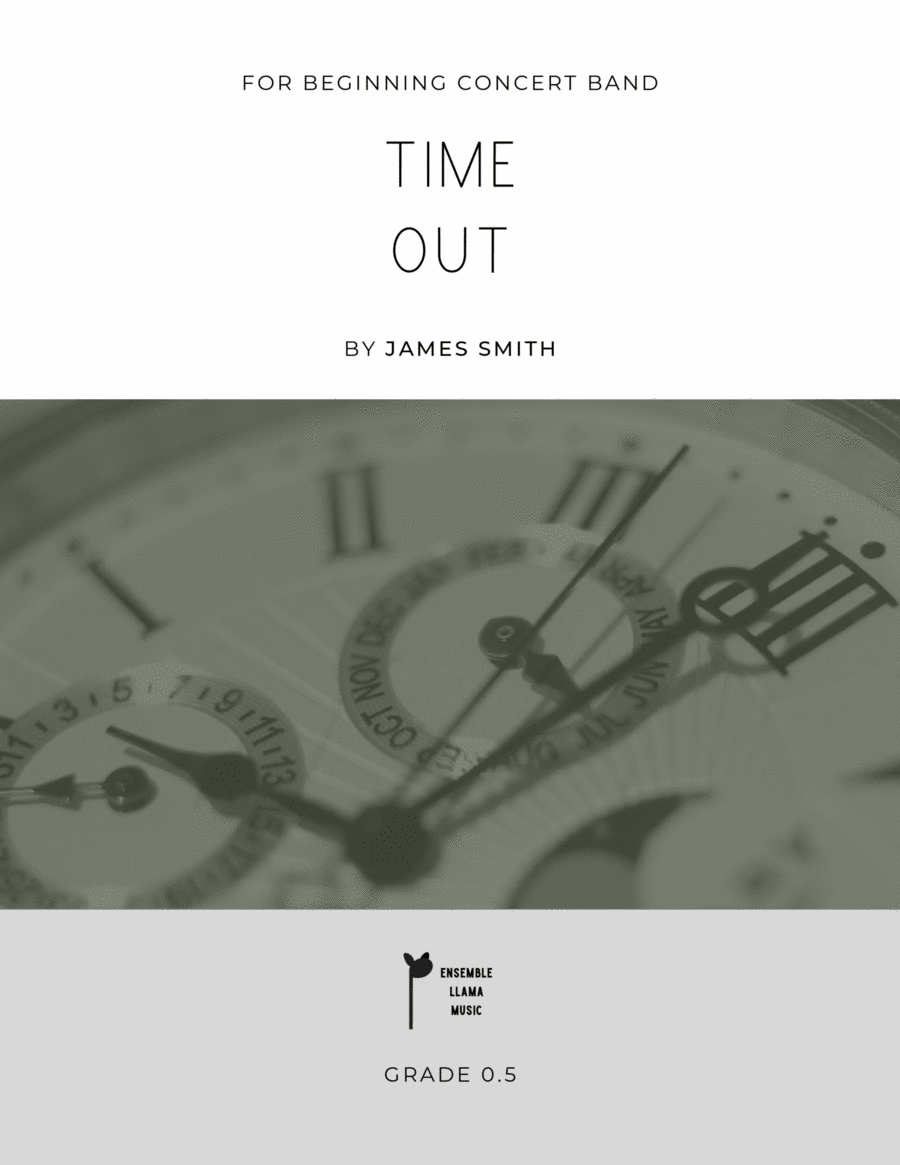Concert Band - Level 1 - Digital Download SKU: A0.1402009 Composed by James Smith. Contest,Festival,Instructional. 26 pages. James Smith #985205. Published by James Smith (A0.1402009). Chill out with this selection intended for first-year players, Time Out. Written with the first 4 notes of the A minor blues scale in mind, and using only 6 different notes, younger players will find instant success when learning its catchy bass line and repeated rhythms.Time Out can be performed by a minimal concert ensemble of flutes, clarinets, alto saxophones, trumpets, trombones, and percussion, and uses the A minor blues scale (A, C, D, Eâ™). I am incredibly excited to offer this selection to you in a effort to diversify concert band music repertoire for younger player that avoids using typical key signatures, but does not veer too far away from standard practices. It is suggested that players practice playing the first few notes of the concert Bâ™ scale (Bâ™, C, D, Eâ™), then swapping out concert Bâ™ for concert A. Make sure measures 1-3 are accurately learned by the wind players before learning the rest of the piece. In measure 39, there is a glissando, or “fall” that might be seen in jazz music. (The playback does not support accurate sounds for this effect.) Have players find a random high note, then all descend to the low register of their instruments within 4 beats through fingerings, slides, etc.View more of my catalog here at linktr.ee/jamessmithmusic.
